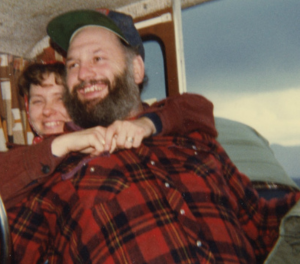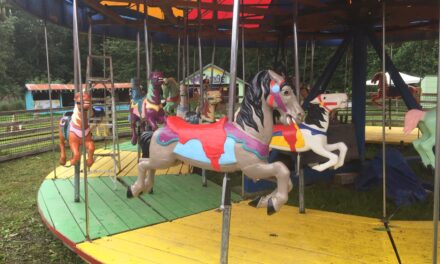The Polynesian Voyaging Society has docked their canoe Hōkūle‘a (pronouncer) in Haines. The canoe is at the center of a cultural renaissance for the Indigenous seafaring nations of the Pacific. We spoke with crew member Moani Heimuli about traditional navigation.
Moani Heimuli started sailing traditional canoes in Hawaii when she was 15. She is now a boat builder, teaches sailing, and captained the Hokulea -a 60’ double hulled voyaging canoe- on its latest trip from Hoonah to Haines. The Hōkūle‘a has been central to the Polynesian Voyaging Society’s work in reviving traditional knowledge.
Heimuli: “Non-instrument navigation was once a lost art form to the Hawaiian people. And it took a man by the name of Pius Mau Piailug, from Satawa, micronesia. We call him Mau, or Papa Mau, and it just so happened he was in Hawaii at the time Hōkūle‘a was being built.”
The Hōkūle‘a was built at the time of the Hawaiian renaissance.
Heimuli: “That was a time of our language being brought back into schools, so that little babies are now starting to learn their culture and their language again. And Hōkūle‘a was built to really fill that void of the seafarers. And prove that polynesian people knew how to navigate, knew how to wayfind, and we voyaged, and we traveled with purpose.”
There was atheory that Pacific Islands had been populated by people drifting aimlessly through the ocean. Heimuli says Papa Mau connected with the Polynesian Voyaging Society, and translated the knowledge he had learned at home into Hawaiian. He translated the compass.
Heimuli: “It’s a star compass, it’s 360 degrees, four cardinal points, and in between those point are seven star houses, I’m going to get really complex on you. So each star house is 11.25 degrees. Those star houses have the same name in each quadrant.”
In each quadrant, stars, sun and moon will rise in the east and set in the west.
Heimuli: “If a star is rising, in the east, in the house of Laa, which is just above east, Laa Honolao, so the star rises, it’s like a first name and last name. And then the star goes up, reaches it’s zenith, and sets in the west, and it will set in Laa Honolua.”
Heimuli says the canoe is the center of the compass, and the horizon is its edge.
Heimuli: “That is our whole compass. And if you look on the canoe Hōkūle‘a, we actually have markings for each house. So a navigator will sit at a certain point in the canoe, and you can use the lines that are pointed out to know the different houses and watch, really watch, stars rise out of the sky, or set into the horizon.”
This system’s reference points are different from those of modern navigation.
Heimuli: “When we start to learn navigation, we are taught that the canoe never moves, the island is pulled to you. So you have to really use your imagination in all these things, but really trust in what our teachers have taught us over the generations.”
In the morning, when the stars fade, navigators observe the swell. Heimuli says the two most important times for a navigator are sunrise and sunset. This is the time to calibrate the direction of the boat in relation to the swell.
Heimuli: “So the swells are a constant. It takes a long time for a swell to change, but we there is always going to be this constant swell which is the trade swell that we have in Hawaii. So we memorize the feeling of the canoe at that point, and the swell, and the direction the swell is coming from.”
Knowing the direction you are traveling is good, but how do you find islands in the great wide ocean?
Heimuli: “There are signs. One you look at clouds, clouds tend to gather up ove islands, we also use birds. I Hawaii we have a bunch of different type of birds that will fly out to sea in the morning, they’ll feed and then come back in the evening to feed their babies, so we’ll watch for those birds, because we know if we see that bird in the morning, we don’t want to follow it. But as soon as it turns afternoon time and we see that bird fly a particular way, we know ok, that bird is going to go home and feed it’s babies, so we are going to watch that bird.”
Heimuli says some marine life can indicate the canoe’s position.
Heimuli: “There is a particular pod of dolphins around the equator. And we’ll know, ok, it’s very interesting to see, the water just starts boiling. And it’s this huge pod of dolphins. So we know that they are around the same spot every time we sail.”
Heimuli says she is thrilled to see how traditional navigation skills are now being taught in schools. Hawaii now has a fleet of eight ocean going canoes. Many other nations are building traditional canoes and teaching the skills.
Heimuli: “It’s really amazing, and we have to keep doing it, because if we stop traveling, then we stop visiting our cousins all around the world, but then also the teaching ends right there with us. So we need to keep on teaching.”
The Hōkūle‘a and its crew will be in Haines until Saturday. They will then leave for Juneau, and on to a four year voyage around the Pacific.









